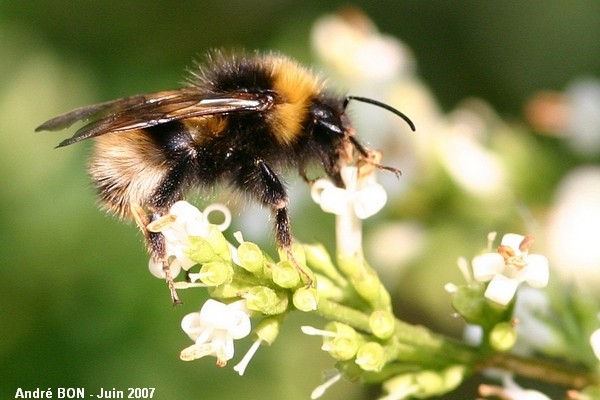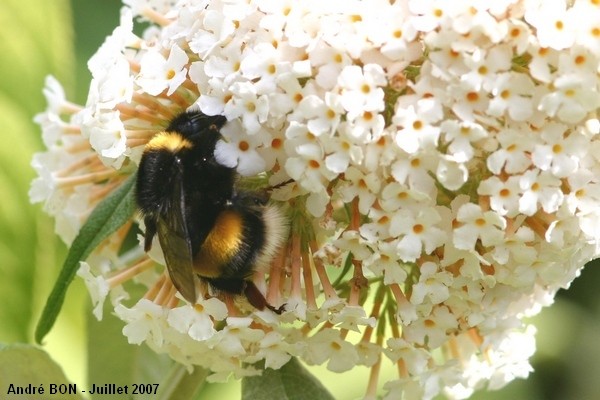

| Buff-tailed Bumblebee (Bombus terrestris (Linnaeus, 1758)) |


|
|
Scientific name: Bombus terrestris (Linnaeus, 1758) Common name: Buff-tailed Bumblebee Other names: Large Earth Bumblebee French name: Bourdon terrestre, Cul blanc Order: Hymenoptera Family: Apidae Wingspan : 15 to 20mm, 20 to 27 mm for the queen. Biotope: Forests, flower meadows, fields, parks and gardens. Up to an altitude of 2000 meters. Geographic area: All Europe except extreme North. North Africa. South America. New Zealand. Observation period : April to September. |
You can identify the Buff-tailed Bumblebee with its wide orange yellow band on the front of the thorax and another band of the same colour on the second segment of the abdomen. The tip of the abdomen has white hairs. Bombus Terrestris is very difficult to differentiate from Bombus lucorum which is also very common. Like Honey Bees, Buff-tailed Bumblebees feed on nectar they directly collect with their very long tongue. They also collect pollen by brushing their hairs. They use pollen baskets located on the tibias of their hind legs to carry the pollen to the nest. Colonies of 400 to 600 Bumblebees are usually located in abandoned mouse burrows. They are created by fertilized females which are the only members of the colony to survive during winter. Only female Bumblebees can sting when provoked and ,unlike Honey Bees, they can withdraw their sting and they do not die. |
| [To know more about Buff-tailed Bumblebee] [Next picture] [Top] |

|
There is a possible confusion with Bombus lucorum. |
| [To know more about Buff-tailed Bumblebee] [Previous picture] [Top] |

|
The Buddleia blossom makes a good stock of nectar. |